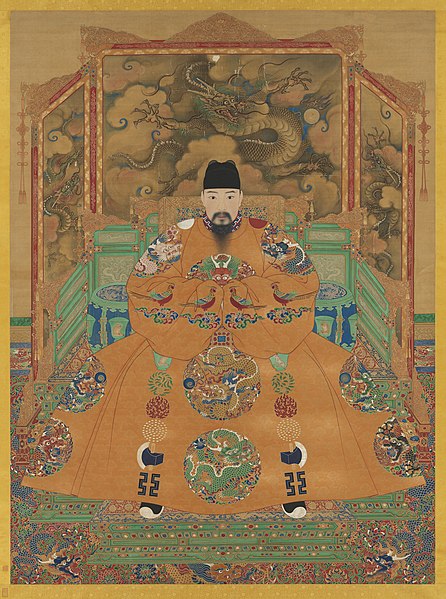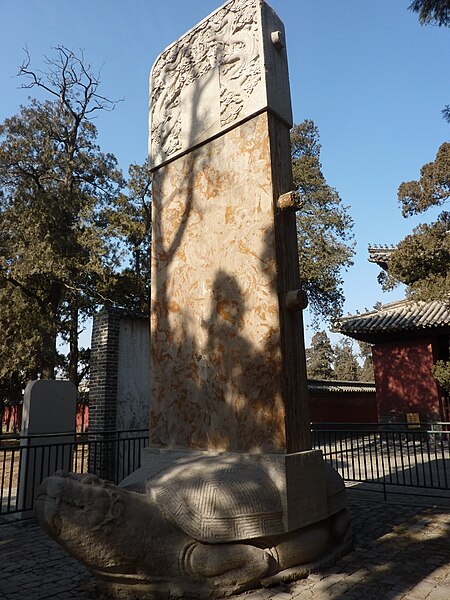The Hongzhi Emperor, also known by his temple name as the Emperor Xiaozong of Ming (明孝宗), personal name Zhu Youcheng (朱祐樘), was the tenth emperor of the Ming dynasty, reigned from 1487 to 1505. He succeeded his father, the Chenghua Emperor. The Hongzhi Emperor was a wise and peaceful ruler. "Hongzhi", the era name of his reign, means "great governance".
Palace portrait on a hanging scroll, kept in the National Palace Museum, Taipei, Taiwan
A stele with the Hongzhi Emperor's inscription regarding the repair of the Temple of Confucius, Qufu. 1504 (17th year of the Hongzhi era)
Detail of the painting Poet on a Mountaintop by Shen Zhou (1427–1509), ink on paper. The Nelson-Atkins Museum of Art, Kansas City, Missouri
The Tailing (泰陵) mausoleum where the Hongzhi emperor was buried.
The Chenghua Emperor, also known by his temple name as the Emperor Xianzong of Ming (明憲宗), personal name Zhu Jianshen (朱見深), changed to Zhu Jianru (朱見濡) in 1457, was the ninth emperor of the Ming dynasty, who reigned from 1464 to 1487. He succeeded his father, Emperor Yingzong. "Chenghua", the era name of his reign, means "accomplished change".
Palace portrait on a hanging scroll, kept in the National Palace Museum, Taipei, Taiwan
Empress Wang; she became the Chenghua Emperor's second empress after he deposed Empress Wu due to a dispute with Lady Wan. Empress Wang learned from her predecessor's fate and was careful not to cross paths with Lady Wan. However, Lady Wan only had one son who died soon after, causing her to feel threatened by the potential offspring of other consorts. As a result, Empress Wang remained childless out of fear and maintained her position through yielding and careful actions.
Emperor Xianzong (Chenghua Emperor) playing with birds (憲宗調禽圖)
This painting, by an imperial court painter in 1485, depicts the Chenghua Emperor enjoying the festivities with families in the Forbidden City during the Lantern Festival. It includes acrobatic performances, operas, magic shows and setting off firecrackers.








